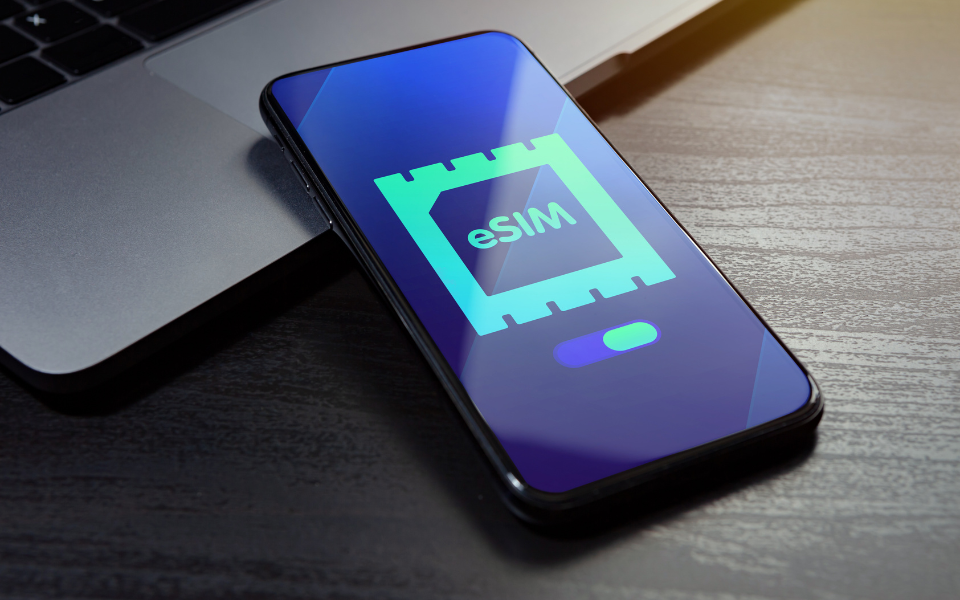In the ever-evolving landscape of mobile technology, the emergence of embedded SIM (eSIM) cards has sparked significant interest and debate among consumers and businesses alike. This article aims to delve into the distinctions between eSIM and traditional SIM cards, exploring their features, advantages, and implications for users in various contexts.
As the adoption of eSIM technology continues to rise, consumers and businesses are faced with the decision of choosing between eSIM and traditional SIM cards. While traditional SIM cards have been the standard for decades, innovative solutions like eSIMs are reshaping the landscape of mobile connectivity. To explore the differences between eSIM and traditional SIM cards further, let’s delve into their features, advantages, and implications. For those interested in exploring eSIM options, services like Hello Prepay offer comprehensive eSIM plans and services tailored to individual needs.
What are eSIM and Traditional SIM Cards?
Traditional SIM Cards
Traditional SIM (Subscriber Identity Module) cards have been the standard for cellular connectivity in mobile devices for decades. These small, removable cards store subscriber information and network credentials, enabling devices to connect to cellular networks and access voice, text, and data services.
eSIM Cards
In contrast, eSIM (embedded SIM) technology eliminates the physical SIM card altogether, embedding the subscriber identity directly into the device’s hardware. eSIMs are integrated into devices during manufacturing and can be programmed with multiple network profiles, allowing users to switch between carriers without swapping SIM cards.
Differences in Form Factor and Installation
Form Factor
Traditional SIM cards are small, removable plastic cards that must be physically inserted into a designated slot in a device, such as a smartphone or tablet. In contrast, eSIMs are integrated directly into the device’s circuitry and do not require a physical card. This difference in form factor makes eSIMs particularly suitable for smaller, slimmer devices where space is limited.
Installation
Installing a traditional SIM card involves physically inserting the card into the device’s SIM card slot, which may require tools such as a SIM card ejector tool. On the other hand, eSIM activation typically involves scanning a QR code or entering a code provided by the carrier to download the network profile onto the device. This streamlined activation process simplifies setup and eliminates the need for physical SIM card handling. For step-by-step guidance on activating eSIMs on different devices, you can visit the support pages of manufacturers like Apple, Samsung, and Google.
Flexibility and Convenience
Flexibility
One of the primary advantages of eSIM technology is its flexibility and versatility. With eSIMs, users can easily switch between multiple network profiles without needing to swap physical SIM cards. This flexibility is particularly beneficial for travelers who may require different carrier plans depending on their location or for individuals who wish to take advantage of competitive pricing and promotions offered by various carriers.
Convenience
eSIMs offer unparalleled convenience compared to traditional SIM cards. Users can activate or change their network profiles directly from their device’s settings menu, eliminating the need to visit a carrier store or wait for a physical SIM card to arrive in the mail. This convenience extends to businesses managing fleets of devices, as eSIMs can be provisioned and managed remotely, reducing administrative overhead and downtime.
Coverage and Compatibility
Coverage
Both eSIM and traditional SIM cards provide access to cellular networks operated by mobile carriers. However, the availability and quality of coverage may vary depending on the carrier and geographic location. Users should research carrier coverage maps and network reliability to ensure adequate coverage for their needs.
Compatibility
One consideration when comparing eSIM and traditional SIM cards is device compatibility. While eSIM technology is becoming increasingly prevalent in newer smartphones, tablets, and wearable devices, not all devices support eSIM functionality. Users should verify whether their device is eSIM-compatible before opting for an eSIM plan.
Security and Data Protection
Security
eSIM technology offers enhanced security features compared to traditional SIM cards. eSIMs utilize robust encryption algorithms to protect subscriber information and network credentials, reducing the risk of unauthorized access and SIM card cloning. Additionally, eSIMs support remote provisioning and management, allowing users to remotely lock or erase their device in the event of loss or theft.
Data Protection
With eSIMs, users have greater control over their data and privacy. eSIM technology enables users to compartmentalize their digital identities by creating separate network profiles for different purposes, such as personal and professional use. This segregation of profiles enhances data protection and privacy, as users can restrict access to sensitive information on a per-profile basis.
Cost Considerations
Initial Investment
In terms of initial investment, traditional SIM cards may be more cost-effective for users who already own devices with SIM card slots. Users can purchase a SIM card from their carrier or a third-party retailer and activate it with a prepaid or postpaid plan. In contrast, eSIM-compatible devices typically come with eSIM functionality pre-installed, eliminating the need for additional hardware. For those considering eSIM options, providers like Hello Prepay offer competitive eSIM plans designed to suit various budgets and usage patterns. Leading carriers such as AT&T and T-Mobile also provide eSIM support and plans tailored to meet the needs of their customers.
Service Plans
When comparing service plans, the cost of eSIM and traditional SIM plans may vary depending on factors such as data allowances, voice minutes, and international roaming rates. Users should evaluate the offerings of different carriers and choose a plan that best suits their usage patterns and budget.
Conclusion
In conclusion, the choice between eSIM and traditional SIM cards depends on individual preferences, device compatibility, and specific use cases. While traditional SIM cards offer familiarity and widespread compatibility, eSIM technology provides unparalleled flexibility, convenience, and security. As eSIM adoption continues to grow and more devices become eSIM-compatible, users can expect to see further innovation and enhancements in mobile connectivity. Whether opting for the simplicity of a traditional SIM card or embracing the versatility of eSIM technology, users can enjoy seamless access to cellular networks and stay connected wherever they go.

